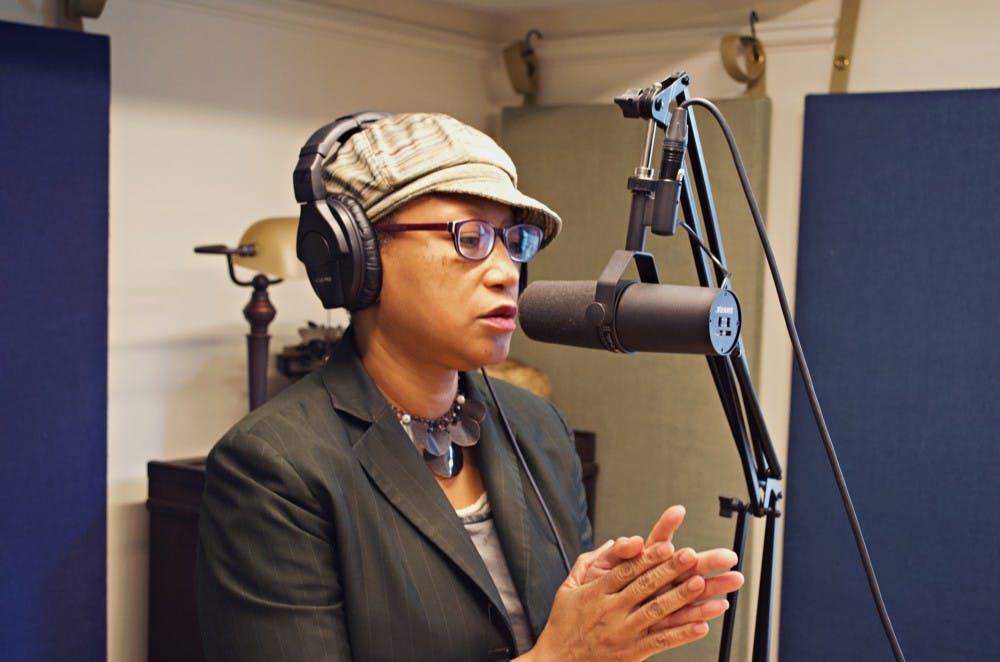"I know you have an endless list of achievements—from writing poetry, to creating music, to composing musicals and opera. What would you say first inspired you to get into multimedia text to begin with?"
I ask this to professor Janice Lowe, who sits to my right. Her expression is one of contemplation as she pauses and breathes a deep sigh. "Well, I think...working in a multimedia way is just a natural extension of my interests in music and writing," she replies. "I sort of kept poetry separate from my music, and then when I started putting it together, then it [started] to have a multimedia life."
A composer, poet, and vocalizing pianist who has long mixed music and text together, Lowe has collaborated with all manner of lyricists, librettists, and playwrights. Despite her many accomplishments, including publishing poetry collections, short plays, international performances, promoting social activism through art, and her recording of the album Leaving CLE: Song Cycle–Songs of Nomadic Dispersal, she has never truly thought of herself as a lyricist. In fact, she notes that she usually wouldn't combine her poetry with music, and has only started to do so in the past few years. Lowe elaborates, "With poetry...sometimes it is more abstract, some may be narrative, some is not...I am not necessarily writing for it to be sung, I just sort of felt compelled to get it out of my mouth in all these different ways, including singing, sprechstimme, speaking, chanting... A lot of different kinds of ways of making sound with text."

Lowe currently teaches English 010: Writing and Performance, a course focusing on music–text engagement, at Penn for Spring 2019. Integration in class is built up through simple beginnings–even a simple smart phone can be used for recording the text–yet the additional tweaks of editing, of pairing animations, or even the layering of sounds or visuals, add depth and meaning to an overall piece. Lowe notes that students "can speak the text, they can cast the text for more than one voice, so they can experiment with duets and trios and quartets of voices...They can film text. They can experiment with animation and photography... It's open." Experimentation is the name of the game when it comes to media and text integration. There is no limit to what students, or what any aspiring artist, can create.
Beyond the array of new technologies which allow for greater ease of synthesizing text and sound, current social context also plays a role in the current precipitation of multimedia text. "I think that people have always blended media. I don't think that in itself is new, because people don't like to be contained in boxes. Someone may practice a particular art form their whole life, but that doesn't mean they don't have any other interest... Miles Davis, composer and trumpet player, also painted. Maybe he didn't think he could bring those two things together, but now someone would, probably." Lowe finishes with a chuckle. The past few decades have seen greater reception in the integration of art through different media. For example, Lowe mentions Urban Bush Women, the New York based dance company which creates pieces integrating speech in choreography. Nowadays, she continues, "people are giving themselves permission to experiment more in that way."
Art, in short, has never been about being constrained into categories. It comes in all shapes and sizes and can easily be made anew through the intermixing of media, like Lowe does through the blending of text and music. Our love of combining and experimenting with separate genres of art is a part of us, and as Lowe notes, "it's always been there."







